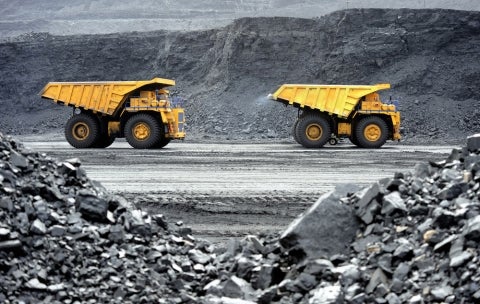Earlier this year the U.S. Department of Interior (DOI) halted new coal leases on federal lands pending a review of the leasing program, which some have called inconsistent with the Obama administration’s climate targets.
In
a new article in Science, a group of leading economists and energy experts highlights features in the leasing program that are ripe for reform, including an auction process and royalty rates that simply don’t reflect the social costs of coal. Those costs include impacts from coal-bed methane emissions, water pollution, and greenhouse gas emissions related to combustion.
And while the fate of any reform efforts is uncertain during a Trump administration, the challenges presented by the federal leasing program are not going away any time soon, said lead author
Kenneth Gillingham, an assistant professor of economics at the Yale School of Forestry & Environmental Studies.
“There is more than enough evidence now to warrant a very serious review and reform of the federal coal leasing program,” said Professor Gillingham. “It’s very clear that the social costs of coal, in particular, are not incorporated in any meaningful way in how the royalties are administered. This is a jarring disconnect for a government that in general tries to incorporate social costs, particularly of climate change, in policy discussions.
“And there are real concerns about whether the program is providing a fair return to the owner of the land — the American people.”
In addition to incorporating those social costs, the authors make the case that more research is needed to better understand how policy changes might impact the potential shift to nonfederal coal and other energy resources if royalty rates are increased, a lack of competition in federal coal leasing auctions, and incentives inherent within the current leasing program.
About 40 percent of all coal mined in the U.S. is extracted from lands owned by the federal government under leases managed by the DOI. The burning of that coal accounts for about 13 percent of U.S. energy-related greenhouse gas emissions.
More than 80 percent of federal coal comes from the U.S. West. Coal extracted from the Powder River Basin, located in Wyoming and Montana, fetches about $0.51 per one million British thermal units (MMBtu) before transportation. By comparison, other major coal-producing basins in the U.S. range from $1.41 to $1.80 per MMBtu.
In addition, the current leasing program promotes very little competition: From 1990 to 2012 more than 90 percent of leases had a single bidder. Yet despite this and other shortcomings, the authors write, there has been little research on finding new solutions. In the case of the auction system, for instance, there could be more research into regional leasing models that would encourage greater competition.
Read the article
